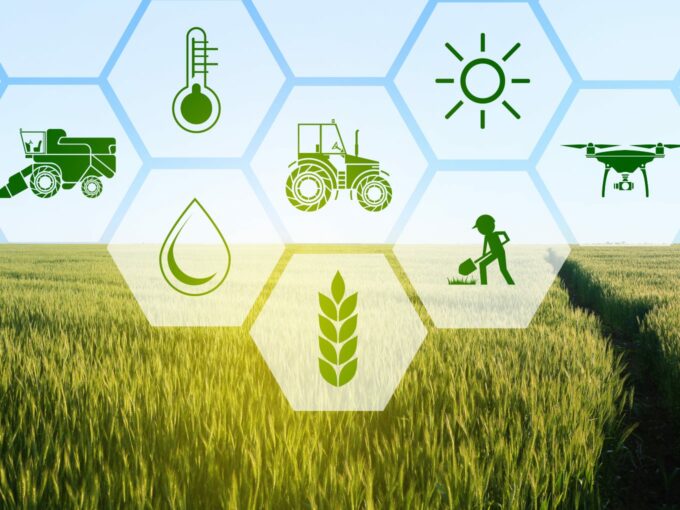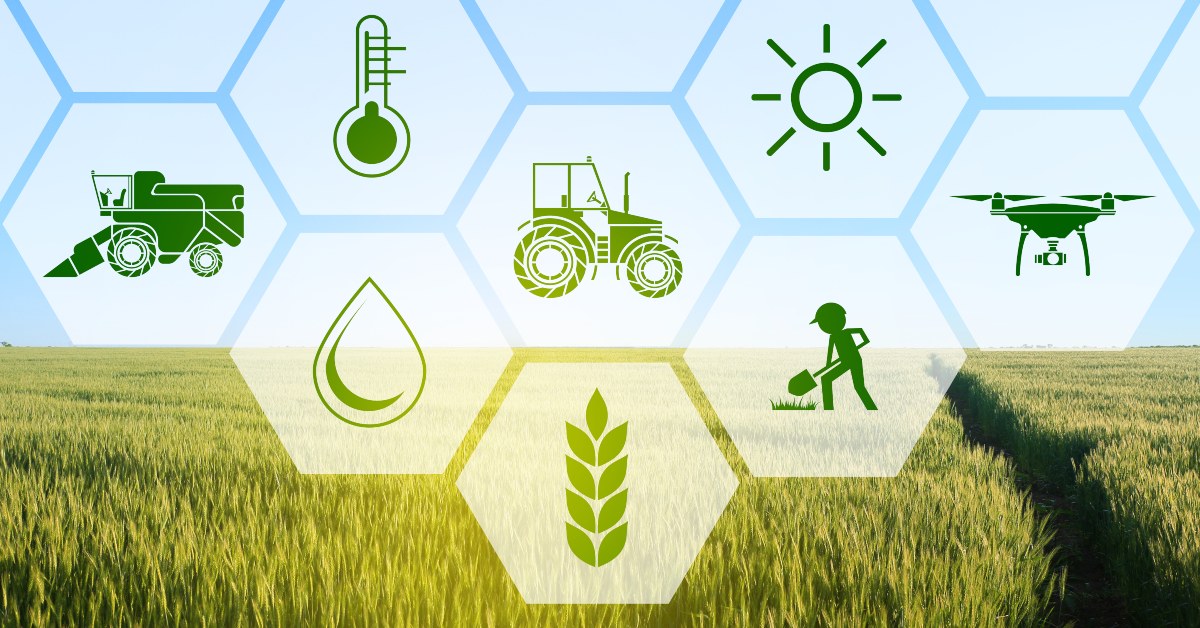The most advantageous element of a technical revolution in agriculture is increased crop productivity
Farm management software provides increased efficiency at lower prices, worker safety, and appropriate water, fertiliser, human resource, and pesticide usage, all of which decrease the influence and pressure on natural ecosystems
When it comes to minimising the environmental and ecological effects of traditional agricultural methods, technology plays a major role

Agriculture and associated sectors are India’s primary revenue generators, contributing a chunk to the country’s GDP. Due to various technical developments such as sensors, gadgets, equipment, and information technology, modern farms and agricultural companies work in a completely altered way than they did a few decades ago. For a revolution to occur, it is necessary to address challenges from the past as well as the present, with resources from the future.
Let us look at the essential relationship between the agricultural revolution and technology. Modern farms and agricultural operations are vastly different from those of a few decades ago, owing to many technological developments such as sensors, gadgets, equipment, and information technology.
Artificial intelligence, temperature and moisture sensors, aerial pictures and capturing, satellite imaging, machine learning, climate-smart advisory services, and GPS technology are all commonplace in today’s daily agronomic practices. Smart farming, precision farming, along with contemporary appliances, allow enterprises to enhance profitability, efficiency, and safety while improving their environmental friendliness and their vow to sustainability.
What Does It Mean To Revolutionise The Agricultural Sector?
The most advantageous element of a technical revolution in agriculture is increased crop productivity. Farm management softwares of today provide an increased efficiency at lower prices, worker safety, and appropriate water, fertiliser, human resource, and pesticide usage, all of which decrease the influence and pressure on natural ecosystems. When it comes to minimising the environmental and ecological effects of traditional agricultural methods, technology plays a major role.
What Technical Roles Does A Software Play?
Agriculture using Artificial Intelligence: Farmers may use AI-driven farming to get pest-risk projections, image-based insights, and weather-related data. AI enables farmers to more intelligently and efficiently combat insect assaults, crop loss, climate change, and soil degradation. As a result, current agriculture methods are more cost-effective and sustainable.
Traceability: Today’s consumers are better informed and educated. Consumers nowadays are more cautious than ever before, and they want to know exactly where their food comes from. They may be inclined to use traceability to identify hazardous food and stay up to date on farming operations before the items enter the market. By combining vital data and translating it into actionable insights, clarity in the management of freshness and quality of food may be maintained across the agricultural supply chain in a digitised manner. Farmers may also show off their produce directly to potential consumers, giving them a clear picture of what they are paying for.
Smart Weather Advisory: Variable climatic circumstances might pose a serious hazard to the plantation. As a result, the necessity for weather smart advice to predict climate patterns and changes became critical. Greenhouse gas emissions and how to reduce them are also important and relevant concerns. Weather smart advice reorients agricultural systems to efficiently deal with shifting climates and fulfil plantation and farm produce quality criteria.
Systems for Farm Management: Farm management became challenging for farmers due to the enormous demand for food and the growing lack of labour available on the farm. Farm management has grown easier, more accurate, and virtually flawless as a result of the introduction of technologies such as artificial intelligence, IoT, machine learning, and data analysis tools.
Drones: Drones provide high-resolution images that help field labourers feel less stressed. It is simple to map and survey the field and keep an eye on the plantation at all times. It also offers farmers precise data, allowing them to make well-informed decisions about pesticide application, water requirements, and soil health.
SaaS-based agriculture is the answer to meeting the ever-increasing demand for agri-products while also addressing the agricultural industry’s rising worries about resource depletion, environmental harm, increased carbon footprint, and water waste. Agriculture SaaS can make daily agronomic procedures more sustainable, supply networks more efficient, and food chains more transparent and traceable.








![Read more about the article [Funding alert] yellow.ai raises $78.15M led by WestBridge Capital, Sapphire Ventures, Salesforce Ventures](https://blog.digitalsevaa.com/wp-content/uploads/2021/08/Image68z9-1628082166780-300x150.jpg)
